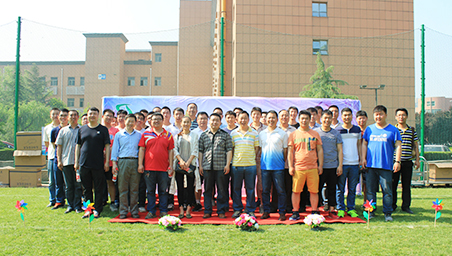
News
aug . 14, 2024 03:42 Back to list
Enhancing Production Methods for High-Quality Polyglutamic Acid in Biotechnology Applications
High-Quality Polyglutamic Acid Production A Comprehensive Overview
Polyglutamic acid (PGA) is a naturally occurring polymer of glutamic acid, an amino acid commonly found in many proteins. It has garnered significant attention in various fields including food, cosmetics, agriculture, and pharmaceuticals due to its biocompatibility, biodegradability, and ability to retain water. The production of high-quality polyglutamic acid is crucial to tapping into its full potential and meeting the increasing industrial demand.
Production Methods
The production of polyglutamic acid can be achieved through several methods, primarily including microbial fermentation, chemical synthesis, and enzymatic processes. Among these, microbial fermentation stands out as the most widely used method due to its eco-friendliness and efficiency. Specific bacteria such as *Bacillus subtilis* and *Bacillus licheniformis* are predominantly used for the fermentation process. These microorganisms are capable of converting glutamic acid and other carbon sources into polyglutamic acid.
To optimize the production of high-quality PGA, several factors need to be carefully controlled during fermentation. These include pH levels, temperature, oxygen supply, and nutrient availability. Maintaining optimal conditions ensures that bacteria proliferate efficiently and produce PGA at higher yields. Additionally, recent advancements in genetic engineering have led to the development of mutant strains that enhance yield and quality.
Quality Parameters
The quality of polyglutamic acid is determined by several parameters including molecular weight, degree of polymerization, and purity. High molecular weight PGA tends to exhibit superior properties such as enhanced viscosity and water-retention capacity, making it more desirable for various applications. Purity is another critical factor; contaminants can significantly affect the performance and safety of PGA in formulations, particularly in food and pharmaceuticals.
Techniques such as chromatographic separation and membrane filtration are commonly employed to isolate high-purity PGA from fermentation broths. These purification processes are essential to ensure that the end product meets regulatory standards and consumer expectations.
high quality polyglutamic acid production

Applications
High-quality polyglutamic acid has a wide range of applications. In the food industry, it is used as a thickening agent, stabilizer, and flavor enhancer. Its ability to retain moisture makes it particularly valuable in processed foods, where it can improve texture and shelf life.
In cosmetics, PGA is celebrated for its moisturizing properties. Its capacity to hold water more effectively than hyaluronic acid positions it as an ideal ingredient in skin care formulations, promoting hydration and enhancing skin elasticity.
In agriculture, polyglutamic acid is gaining traction as a soil conditioner and plant growth promoter. Its ability to improve water retention in soil enhances crop yield, especially in arid regions. Additionally, it serves as a biodegradable alternative to synthetic polymers in various agricultural applications.
Future Perspectives
As the demand for sustainable and environmentally friendly products increases, the market for high-quality polyglutamic acid is expected to grow. Innovations in fermentation technology, such as continuous fermentation and bioreactor design, promise to enhance production efficiency and reduce costs. Furthermore, ongoing research into the genetic modification of microbial strains is likely to yield even higher-performing strains for PGA production.
In conclusion, the production of high-quality polyglutamic acid holds immense potential across various industries. By improving production methods and maintaining stringent quality control, manufacturers can harness the benefits of this versatile polymer, paving the way for innovative applications in the future. As research and technology continue to advance, polyglutamic acid is set to play an increasingly significant role in meeting both consumer and industrial demands in a sustainable manner.
-
Polyaspartic Acid Salts in Agricultural Fertilizers: A Sustainable Solution
NewsJul.21,2025
-
OEM Chelating Agent Preservative Supplier & Manufacturer High-Quality Customized Solutions
NewsJul.08,2025
-
OEM Potassium Chelating Agent Manufacturer - Custom Potassium Oxalate & Citrate Solutions
NewsJul.08,2025
-
OEM Pentasodium DTPA Chelating Agent Supplier & Manufacturer High Purity & Cost-Effective Solutions
NewsJul.08,2025
-
High-Efficiency Chelated Trace Elements Fertilizer Bulk Supplier & Manufacturer Quotes
NewsJul.07,2025
-
High Quality K Formation for a Chelating Agent – Reliable Manufacturer & Supplier
NewsJul.07,2025
